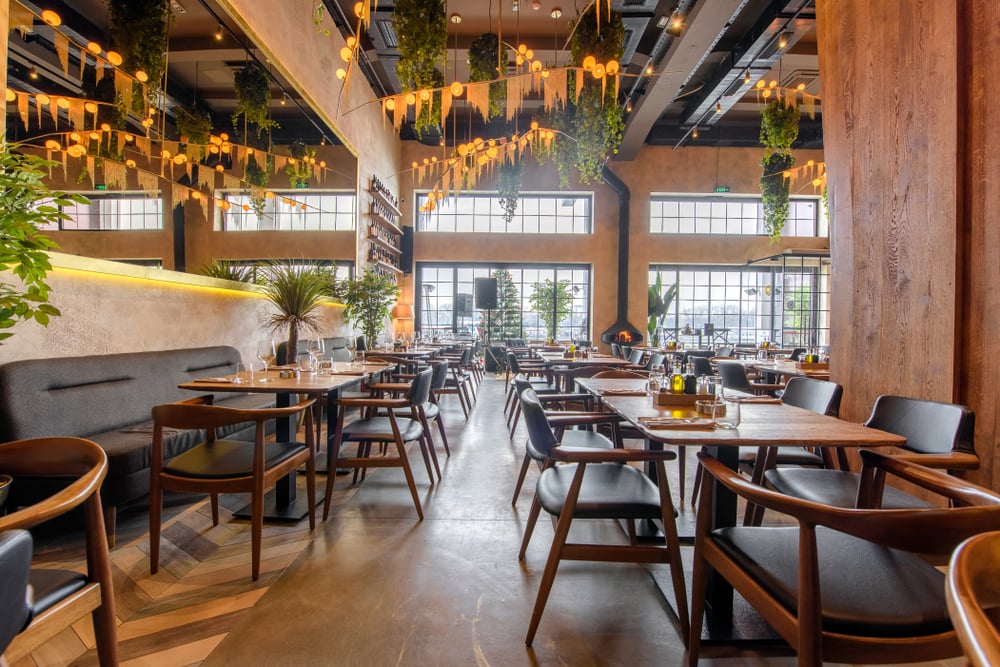When trying to run a profitable hospitality business, dealing with the impacts of no-shows can be seriously damaging. They result in lost revenue and can throw your operations into a tailspin as your team tries to account for them.
As unfortunately common as no-shows are, the hospitality industry is developing better methods to deal with them. We've rounded up nine methods you can use to reduce no-shows in your restaurant. They will help to keep your revenue flowing and your services on track.
What is a no-show?
A no-show refers to a diner or party that makes a reservation but never shows up to fulfil it. Your table sits empty unless you are able to fill it with a walk-in.
If you think that no-shows have caused major problems in your venue, you're certainly not alone. The numbers back up the prevalence of no-shows for hospitality businesses.
- One UK study found that no-shows are costing the industry £17.6 billion a year.
- According to ResDiary's 2024 Hospitality Industry Report for the UK and Ireland, 76% of venues were impacted by no-shows in 2023.
- An average of 8% of bookings did not fulfil their reservation.
- The average loss of revenue due to no-shows was an estimated £3,621 per venue across the year.
What is the impact of no-shows for a restaurant?
No-shows can have major negative consequences for restaurants, including:
- Less revenue: An empty table means less revenue generated for your business in an evening. With thin profit margins in hospitality (just 2-6% for Australian restaurants), these losses can be keenly felt.
- Operational confusion: Busy restaurants rely on a solid, predictable flow of customers to function at their best. When dealing with no-shows, hospitality businesses are forced to adapt and try to fill tables with walk-ins. If your service relies on quick table turnovers to fit in the next reservation, this can seriously throw things off for your team.
- Unnecessary costs: Restaurateurs rely on their booking data to make decisions around rotas and inventory. No-shows throw these calculations off and therefore result in unnecessary spending.

8 ways to reduce no-shows in your restaurant
While no-shows can present many issues for the restaurant industry, the good news is there are tools to deal with them. These methods can prevent no-shows from occurring and mitigate their impacts on your business when they take place.
1. Secure reservations with deposits and no-show fees
Perhaps the most reliable method to ensure a party shows up for their booking is to take a deposit. Often, businesses choose to trigger deposits when bookings are made with more than a certain number of covers.
Reservation management systems like ResDiary allow deposits to be taken as a seamless part of the booking process - we're partnered with Stripe, a globally trusted and PCI compliant payment service provider..
Once you've accepted a deposit, you can also charge a no-show fee. This can go some of the way to covering the costs of the no-show. Just ensure your business has a fully transparent policy covering these areas.
Concerned about how your customers might react to deposits and no-show fees? You don't have to be. Cancellation fees have been identified as a mainstream part of the Australian dining scene.
And according to ResDiary's 2024 Hospitality Industry Report, 62% of diners were happy to provide their credit card details to secure a booking.
2. Send reminders to keep diners on schedule
Life is hectic, and it's easy for diners to forget their restaurant reservations. Maintaining contact with your customers after they make their booking can help to solve this issue.
Using software like ResDiary, you can send branded emails to your customers with links to confirm their reservations. Then, your booking diary is automatically updated.
Other software exists to help restaurant owners and operators in this area. For example, ResDiary’s integration with Silverstreet allows you to automatically send SMS communications to your customers.
Relying on technology streamlines the reminder process. You can set and forget, assured in the knowledge that your customers will receive the necessary nudges to honour their booking.
“We use text reminders to give people warning of their booking. We let them cancel or move their booking from there too, so we know if they can’t make it. For the sake of a few pence, it’s much cheaper than a no-show.” – Peter Kinsella, Owner, Lunya Restaurants
3. Leverage standby lists to fill last-minute gaps
Want to give guests a chance to dine at their chosen time, even if your venue is fully booked? It's time to implement a standby list.
Standby lists are easily enabled with a restaurant reservation system like ResDiary’s W8list™ feature. When customers attempt to make a reservation for a given time, they are advised that they can join the list.
With a standby list, you have the details of eager diners ready to fill in for last-minute cancellations and no-shows. They can be swiftly offered the table, potentially wiping out the impact of a no-show.

4. Encourage walk-ins
When no-shows occur, walk-ins are generally the main method you'll use to fill your tables. Ideally, you should have some systems in place to encourage walk-ins in the case of no-shows.
Here are some simple ways you can encourage more walk-ins in your restaurant:
- Signs: Have some signs notifying passers-by that your business is taking walk-ins. If you are usually fully-booked, you might not permanently display these signs, only showing them when you are specifically trying to entice walk-ins.
- Team members: Have a maître d or other team member stationed out the front of your restaurant. They can answer questions and explain the menu to passers-by, increasing the likelihood that you will be able to fill the table of a no-show.
- Marketing: Include your walk-in availability in your digital marketing and online presence. You might mention it in your email marketing or on your social media profiles. This reinforces the idea that your venue is a good place to dine as a walk-in.
ResDiary offers your business further assistance with walk-ins. You can use ResDiary's W8List™ software to record information about customers on a waitlist.
Integrating directly into your booking diary, W8List™ provides an accurate estimation of how long a customer will be waiting for a table. It then automatically notifies the customer via phone or email when the table becomes available.
Would you like to see W8List™ in action? Book a demo today!
5. Make cancellations easy
A cancellation with a reasonable amount of notice is vastly preferable to a no-show. To avoid no-shows causing too much harm to your venue, the cancellation process must be simple and clear for your customers.
Reminder emails can give diners the opportunity to cancel or rebook their reservation.
In our 2024 Hospitality Tech Trends Report, we discovered that a plurality of customers (33%) believe that up to 24 hours is a fair window for cancelling without losing a deposit. However a significant portion of customers think that providing less than 12 hours' notice is fair. As any restaurant owner or operator knows, this gives virtually no time to fill a table.
This is another reason your cancellation policy must be clear to customers from the outset. Let them know when they can cancel, and what the consequences will be.
6. Educate diners on the impact of no-shows
Keep in mind that your customers don't live and breathe hospitality like you do. They are often quite unaware of the consequences of failing to honour their reservations.
No-shows are the subject of increasing media coverage around the globe. You can do your part by letting your customers know just how significant the impacts of no-shows can be.
You might briefly mention this in your customer confirmation emails. If a customer makes a reasonable cancellation or rebooking, you can reach out and express your gratitude.
You can also reach out to a diner that did not honour a reservation in your venue. Politely let them know the consequences it had for your business.

7. Analyse no-show data predict and prevent losses
To best prepare for no-shows, you should collect and understand as much data as possible. If your business uses a comprehensive table management system like ResDiary, analysing this data is simple.
You can go through your booking data and pick out no-shows, making it simple to spot key trends. Look for insights like:
- Particular time slots where no-shows are most common.
- Types of reservations that are more likely to result in no-shows, such as larger groups or last-minute bookings.
- The identity of repeat no-show offenders.
With these insights, you can prepare for the impact of no-shows in the future. For instance, you might push for a bigger standby list or walk-ins during time periods that are prone to no-shows.
8. Use ticketing to guarantee attendance at events
Holding events at your hospitality venue? You can easily get around no-shows with ticketing.
Simply charge customers the full price of attending your event like a wine tasting or live music night ahead of time. If they don't show up, it doesn't hurt your bottom line.
Since ticketing is a totally common practice, your customers are likely to be completely receptive to this decision.
Manage no-shows in your restaurant with ResDiary
If no-shows are holding you back from optimising your hospitality operations, ResDiary has the tools you need to get a handle on them.
With features like automated customer communications, the W8List™ software and booking data analytics, ResDiary can manage no-shows in almost any way your business wants to.
That's on top of its advanced table management functionality and integrations with over 60 providers of leading hospitality software.




